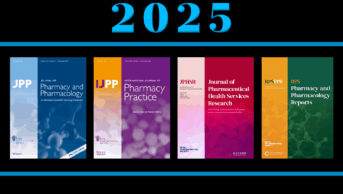After writing about ‘short communications’ as an article type last month, I turn my attention to the ‘editorial’ here. I am interested in the opportunities this article type offers, while being wary of some of its limitations. Editorials are often written in an engaging manner and generally aim to increase readers’ awareness of controversial, pressing, or novel areas. They might accompany a journal’s special issue and thus highlight the published papers within, or they might focus on a stand-alone topic. While some are written in-house by the editorial team and present the journal’s voice, others are commissioned by the editors; for example, by drawing on the expertise of the editorial board to write them or to recommend someone who will.
However, as editorials are considered an ‘opinion’ piece, they could be biased towards the views of the author, or indeed the journal’s editors. Additionally, editorials are often shorter pieces, with limits placed on the number of permissible references and accompanying graphics, meaning they aim for conciseness rather than comprehensiveness. Of course, the purpose of editorials is to encourage more debate, which makes them relevant and worthy of reading. Those interested in editorials as an article type are directed elsewhere for further thoughts and guidance on what these should look like and aim to achieve. With these thoughts in mind, I came across three editorial articles published in the International Journal of Pharmacy Practice (IJPP) this year, which I would like to explore with you.
The first article on my list — ‘Brave new pharmaceuticals world’ — is written by Albert Wertheimer, who was, until recently, the editor-in-chief of the Journal of Pharmaceutical Health Services Research. The title of the article is based on Aldous Huxley’s dystopian novel, ‘Brave New World’; a cautionary tale of how science and technology might control and misshape society in the future. Therefore, I might be forgiven for having expected to read a piece by Wertheimer about how the use of pharmaceuticals might alter practices to create a dystopian new world. For example, how the use of ‘smart drugs’ might create disparities for those who cannot afford them, how health monitoring and 3D printing might come into people’s homes and thus control their power and capabilities, or how artificial intelligence might do away with high-street pharmacies or indeed doctors’ surgeries. Instead, this piece is a gentler and more optimistic look at potential opportunities that might benefit patients and pharmacists in the near future. For example, Wertheimer sees a future in which substandard, counterfeit and misbranded drugs are eliminated as the World Health Organization, Interpol and other agencies gain more control in assuring the quality of drugs. It’s an agreeable read.

Turn, then, to the second article written by Philip Crilly, who considers ‘Opportunities and threats for community pharmacy in the era of enhanced technology and artificial intelligence’. Crilly’s editorial is structured to give a brief introduction to digital technologies and artificial intelligence (AI), before explicating opportunities and threats, and outlining some yet unanswered research questions in the conclusion of the piece.
Similar to Wertheimer’s piece, this editorial aims to persuade the reader to think a certain way about its particular topic. I was especially drawn to what Crilly saw as the role of regulators and the Royal Pharmaceutical Society (RPS) in this space. His view is that organisations, such as the RPS and the General Pharmaceutical Council, ought to “develop regulatory frameworks to support community pharmacists to navigate the changes that digital technology and AI bring”, recognising that the RPS has already included such a discussion in its 2030 vision.
The threats identified by Crilly include job displacement, costs, competition, lack of digital literacy, equality of access, ethics of technology, regulatory barriers, data security and so on. I was interested in his recommendations for research, which I highlight here in full for a wider audience. Framed as research questions, these were:
- How can digital technology and AI be integrated into community pharmacy to enhance patient care and improve health outcomes?
- How can community pharmacies, with limited resources, overcome the technological and financial barriers of implementing new digital technologies?
- What regulatory challenges do community pharmacies need to address when implementing new technologies and AI in healthcare?
Perhaps established and aspiring researchers within our profession might be inspired to follow up on these research questions. If they were to do so, then I hope that these researchers would consider submitting the findings of their work to one of the RPS’s journals.
In this regard, let me now draw your attention to the final editorial on my list. This ‘super editorial’ is in fact co-authored by numerous journal editors and published around the same time in each of the respective journals. The author list includes Christine Bond, editor-in-chief of the International Journal of Pharmacy Practice, and the article was penned following a gathering in Granada, Spain, in the summer of 2022.
The purpose of the group was to identify the elements that may reinforce clinical and social pharmacy practice research as a scientific discipline by consolidating common publication patterns. The resulting paper lists the Granada Statements, comprising 18 recommendations gathered into 6 topics. The first one of these tackles terminology and acknowledges that the discipline of clinical and social pharmacy practice itself lacks a common branding, ranging from clinical pharmacy to pharmacy practice, to administrative pharmacy and so on. I invite you to read the statements in full.
Of course, editorials can serve different purposes. Perhaps all these editorials ought to be read together to stimulate thought on a ‘brave new world’ — not in the way that Huxley imagined it, but perhaps how we, as custodians of today’s world, want to build and represent it for future generations.


